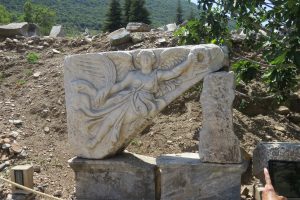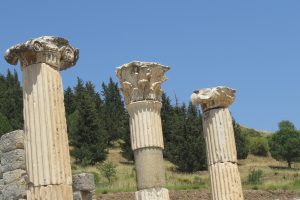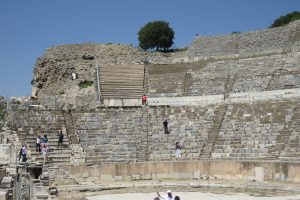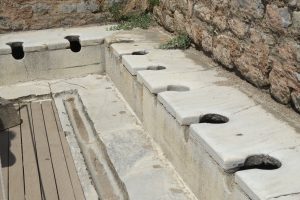As we await the return of European travel it is with trepidation that we consider how our favourite sites may have been affected by the global pandemic. Will our bucket list sites still be accessible? Will there be limitations on the number of people or length of time we can visit? Will some of the more popular ports even be on future cruise itineraries?
 Despite our burning and yet unanswered questions there is one thing we can hold dear; the ancient sites that have been part of the history of Europe for centuries will still be there in our future, no matter how that looks. Combining these with the museums that contain the relics and art that have been restored and protected for future generations will give you a better understanding and appreciation of the evolution of these civilizations.
Despite our burning and yet unanswered questions there is one thing we can hold dear; the ancient sites that have been part of the history of Europe for centuries will still be there in our future, no matter how that looks. Combining these with the museums that contain the relics and art that have been restored and protected for future generations will give you a better understanding and appreciation of the evolution of these civilizations.
To promote (and fondly remember) these places, this will be the first of a five part series on the Ancient Sites of Europe, designed to prepare you for your travels when we can return.
 One of the most inspiring sites we have visited is the ancient city of Ephesus. Located on the western shore of Turkey it is considered to be one of the oldest archeological sites in the world. It was once part of Greece and an important trading centre in the Mediterranean. Part of the lower level of this excavation have been dated back to the 6th century.
One of the most inspiring sites we have visited is the ancient city of Ephesus. Located on the western shore of Turkey it is considered to be one of the oldest archeological sites in the world. It was once part of Greece and an important trading centre in the Mediterranean. Part of the lower level of this excavation have been dated back to the 6th century.
Due to its value as a shipping port and central location in the region it had survived many attacks and the subsequent occupation by the victorious conquerors. Once no longer useful as a port it fell into decline as the harbour that used to service the city of Ephesus is now dry. Today it is an important archeological site and Christian pilgrimage destination. You will find mention of Ephesus in the Bible.
The site was first excavated during the period of 1863 – 1874 by J.T. Wood on behalf of the British Museum. The entry fees from the tourist trade help to fund further research and excavation.
fees from the tourist trade help to fund further research and excavation.
If your cruise stops at either Izmir or Kusadasi you will be able to access this site by shore excursion. The ship will offer both a guided and On Your Own option or you can book a private excursion. We do not recommend trying to get there using public transit due to its remote location. Also, a guide will help you understand and better appreciate what you are seeing so in this case is well worth the investment.
The day we were there in mid-May was a scorcher, usual for that part of the world. There are few, if any, trees for shade so be prepared with sun screen, a hat and water. Some in our group brought umbrellas for shade but they seemed more dangerous in a crowd than helpful.
 Your guide will walk you though the site, stopping to discuss the significance of a particular spot or allow more time for photos. The Celsus Library with its second story columns is breath taking to behold, the public washrooms are uncomfortably interesting and the stone with its engraved directions to the brothel amusing. The Great Theatre begs to be explored along with the terrace houses and commercial storefronts. The temples pay homage to ancient gods and there are still remnants of the wall that protected the city from marauders.
Your guide will walk you though the site, stopping to discuss the significance of a particular spot or allow more time for photos. The Celsus Library with its second story columns is breath taking to behold, the public washrooms are uncomfortably interesting and the stone with its engraved directions to the brothel amusing. The Great Theatre begs to be explored along with the terrace houses and commercial storefronts. The temples pay homage to ancient gods and there are still remnants of the wall that protected the city from marauders.
During these unprecedented times we can hold tight to the knowledge that Europe and the Middle East were around long before this pandemic, have survived far worse, and have emerged victorious. There are so many sites that are important for their longevity and will remain so into the future.
Europe and the Middle East were around long before this pandemic, have survived far worse, and have emerged victorious. There are so many sites that are important for their longevity and will remain so into the future.
For more detail on Ephesus and other ancient sites of Europe check out the History Channel Online at www.history.com.
